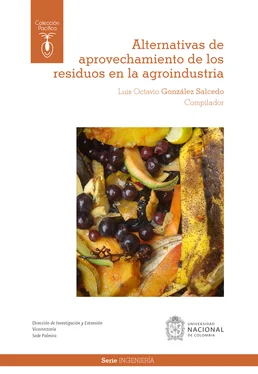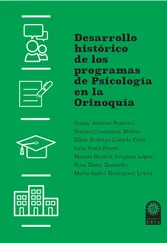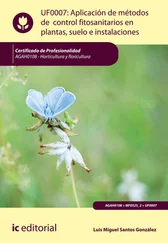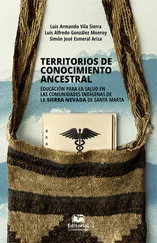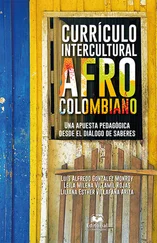Oliveira, D., Angonese, M., Gomes, C. y Ferreira, S. (2016, mayo). Valorization of passion fruit (Passiflora edulis sp.) by products: Sustainable recovery and biological activities. The Journal of Supercritical Fluids, 111, 55-62. doi: 10.1016/j.supflu.2016.01.010
Padalino, L., Mastromatteo, M., Lecce, L., Cozzolino, F. y del Nobile, M. (2013). Manufacture and characterization of gluten free spaghetti enriched with vegetable flour. Journal of Cereal Science, 57(3), 333-342. doi: 10.1016/j.jcs.2012.12.010
Pantoja-Chamorro, A., Hurtado-Benavides, A. y Martínez-Correa, H. (2017a). Caracterización de aceite de semillas de maracuyá (Passiflora edulis) procedentes de residuos agroindustriales obtenidos con CO2 supercrítico. Acta Agronómica, 66(2), 178-185. doi: 10.15446/acag.v66n2.57786
Pantoja-Chamorro, A., Hurtado-Benavides, A. y Martínez-Correa, H. (2017b). Evaluación del rendimiento, composición y actividad antioxidante de aceite de semillas de mora (Rubus glaucus). Extraído con CO2 supercrítico. Información Tecnológica, 28(1), 35-46. doi: 10.4067/S0718-07642017000100005
Parveen, J., Saheed, O. K. y Zahangir, A. (2012). Bio-valorization potential of banana peels (Musa sapientum): An overview. Asian Journal of Biotechnology, 4(1), 1-14. doi: 10.3923/ajbkr.2012.1.14
Pasquel R., L. J., Machado, A. P. da F., Barbero, G. F., Rezende, C. A. y Martínez, J. (2014, octubre). Extraction of antioxidant compounds from blackberry (Rubus sp.) bagasse using supercritical CO2 assisted by ultrasound. The Journal of Supercritical Fluids, 94, 223-233. doi: 10.1016/j.supflu.2014.07.019
Pathak, P. D., Mandavgane, S. A. y Kulkarni, B. D. (2016). Valorization of banana peel: A biorefinery approach. Reviews in Chemical Engineering, 32(6), 651-666. Doi: 10.1515/revce-2015-0063.
Poggi-Varaldo, H., Munoz-Paez, K., Escamilla-Alvarado, C., Robledo-Narváez, P., Ponce-Noyola, M., Calva-Calva, G. y Rinderknecht-Seijas, N. (2014). Biohydrogen, biomethane and bioelectricity as crucial components of biorefinery of organic wastes: A review. Waste Management & Research, 32(5), 353-365. doi: 10.1177/0734242X14529178
Pomeranz, Y. (1985). Functional properties of food components. Orlando, FL: Academic Press.
Quintana, G., Arroyave, M. y Suárez, D. (2008). Obtención de pulpa a partir de los residuos de palma africana pretratados con steam explosión. Ponencia presentada en el V Congreso Iberoamericano de Investigación en Celulosa y Papel. CIADICYP, Guadalajara, Jalisco. Recuperado de https://bit.ly/2NmMKb6
Quintero, V., Kafarov, V., Barajas, C. Castillo, E. y Mesa G., L. (2009). Estimación de la capacidad de producción de bioetanol de segunda generación en la agroindustria azucarera colombiana. Revista Centro Azúcar, 36(1), 36-41.
Ramírez, V. y Suárez, O. E. (2010). Revalorización de residuos en las cadenas de valor de las industrias frutícolas en Manizales. Vector, (5), 93-102.
Ranganath, K. G., Shivashankara, K. S., Roy, T. K., Dinesh, M. R., Geetha, G. A., Pavithra, K. C. y Ravishankar, K. V. (2018). Profiling of anthocyanins and carotenoids in fruit peel of different colored mango cultivars. Journal of Food Science and Technology, 55(11), 4566-4577. doi: 10.1007/s13197-018-3392-7
Reddy, N. y Yang, Y. (2005). Biofibers from agricultural by-products for industrial applications. Trends and Biotechnology, 23(1), 22-27. doi: 10.1016/j.tibtech.2004.11.002
Rezig, L., Chouaibi, M., Msaada, K. y Hamdi, S. (2012). Chemical composition and profile characterisation of pumpkin (Cucurbita maxima) seed oil. Industrial Crops and Products, 37(1), 82-87. doi: 10.1016/j.indcrop.2011.12.004
Rincón, S. (2009). Generación energética a partir de biomasa residual colombiana. Foro de innovación “Environment for Life”, Universidad Nacional de Colombia -Sede Bogotá.
Rodríguez, V. N. y Zambrano, D. A. (2010, marzo). Los subproductos del café: Fuente de energía renovable. Avances Técnicos Cenicafé, (393), 1-8. Recuperado de https://bit.ly/3vqS661
Rojas-Garbanzo, C., Zimmermann, B., Schulze-Kaysers, N. y Schieber, A. (2016). Characterization of phenolic and other polar compounds in peel and flesh of pink guava (Psidium guajava L. cv. ‘Criolla’) by ultra-high-performance liquid chromatography with diode array and mass spectrometric detection. Food Research International, 100(3), 445-453. doi: 10.1016/j.foodres.2016.12.004
Różyło, R., Gawlik-Dziki, U., Dziki, D., Jakubczyk, A., Karaś, M. y Różyło, K. (2014). Wheat bread with pumpkin (Cucurbita maxima L.) pulp as a functional food product. Food Technology & Biotechnology, 52(4), 430-438. doi: 10.17113/ftb.52.04.14.3587
Saavedra, J., Córdova, A., Navarro, R., Díaz-Calderón, P., Fuentealba, C., Astudillo-Castro, C., … y Galvez, L. (2017, abril). Industrial avocado waste: Functional compounds preservation by convective drying process. Journal of Food Engineering, 198, 81-90. doi: 10.1016/j.jfoodeng.2016.11.018
Saavedra, M., Aires, A., Dias, C., Almeida, J., de Vasconcelos, M., Santos, P. y Rosa, E. (2015). Evaluation of the potential of squash pumpkin by-products (seeds and shell) as sources of antioxidant and bioactive compounds. Journal of Food Science and Technology, 52(2), 1008-1015. doi: 10.1007/s13197-013-1089-5
Sagwan, S., Rao, D. y Sharma, R. (2010). Phytochemical evaluation and quantification of primary metabolites of Maytenus emarginata (Willd.) Ding Hou. Journal of Chemical and Pharmaceutical Research, 2(6), 46-50.
Salisbury, F. y Ross, C. (2000). Fisiología de las plantas 2. Bioquímica vegetal. Madrid: Paraninfo.
Sanders, J., Clark, J., Harmsen, H., Heeres, H., Heijnen, J. y Kerste, S. (2012, enero). Process intensification in the future production of base chemicals from biomass. Chemical Engineering and Processing, 51, 117-136. doi: 10.1016/j.cep.2011.08.007
Schieber, A., y Saldaña, M. D. (2009). Potato peels: A source of nutritionally and pharmacologically interesting compounds-A review. Global Science Books, Food 3(2), 23-29.
See, E., Wan N., W. y Noor, A. (2007). Physico-chemical and sensory evaluation of breads suplemented with pumpkin flour. ASEAN Food Journal, 14(2), 123-130.
Sidhu, J. S. y Zafar, T. A. (2018). Bioactive compounds in banana fruits and their health benefits. Food Quality and Safety, 2(4), 183-188. doi: 10.1093/fqsafe/fyy019
Sierra, A. J. (2009). Alternativas de aprovechamiento de la cascarilla de arroz en Colombia (Tesis de maestría). Universidad de Sucre. Recuperado de https://repositorio.unisucre.edu.co/bitstream/handle/001/211/333.794S571.pdf?sequence=2
Spadotto, C. y Ribeiro, W. (eds.). (2006). Gestão de resíduos na agricultura e agroindústria. Sao Paulo: Fundación de estudios e Pesquisas Agrícolas e Florestais.
Someya, S., Yoshiki, Y. y Okubo, K. (2002). Antioxidant compounds from bananas (Musa Cavendish). Food Chemistry, 79(3), 351-354. doi: 10.1016/S0308-8146(02)00186-3
Srimachai, T., Thonglimp, V. y O-Thong, S. (2014). Ethanol and methane production from oil palm frond by two stage SSF. Energy Procedia, 52, 352-361. doi: 10.1016/j.egypro.2014.07.086
Susaritha, R., Prakash, A. y Vadivel, V. (2021). Utilization of anthocyanins-rich extract from banana bract in the green synthesis of AgNPs with anti-proliferative Potential. Proceedings of the National Academy of Sciences, India Section B: Biological Sciences, 1-10. doi: 10.1007/s40011-020-01216-9
Tremocoldi, M., Rosalen, P., Franchin, M., Massarioli, A., Denny, C., Daiuto, É., ... y Alencar, S. de (2018). Exploration of avocado by-products as natural sources of bioactive compounds. PLOS ONE, 13(2), e0192577. doi: 10.1371/journal.pone.0192577
Triana, C., Quintero, J., Agudelo, R., Cardona, C. e Higuita, J. (2011). Analysis of coffee cut-stems (CCS) as raw material for fuel ethanol production. Energy, 36(7), 4182-4190. doi: 10.1016/j.energy.2011.04.025
Читать дальше
